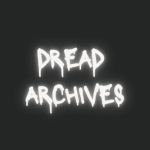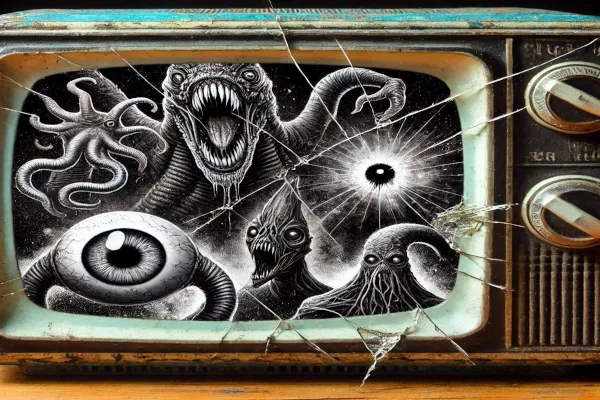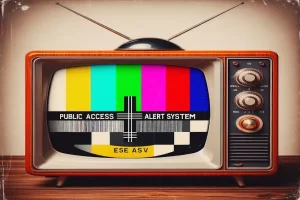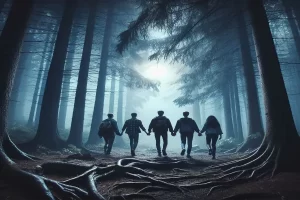In recent years, analogue horror has emerged as one of the most intriguing subgenres within the broader horror landscape. Characterized by its use of outdated, VHS-style visuals, distorted audio, and unsettling imagery, analogue horror taps into a unique blend of nostalgia and discomfort. This style of horror is not just a throwback to the past but a carefully crafted experience that evokes fear through its vintage aesthetics and eerie atmosphere.
The rise of analogue horror can be attributed to several factors, particularly the growing fascination with retro technology and the unsettling, often cryptic narratives that accompany it. Fans of this genre are drawn to its ability to create an atmosphere of dread, where something feels off in the most subtle and unsettling ways. Unlike more traditional horror, where monsters or jump scares dominate, analogue horror thrives on tension, mystery, and the creeping feeling that something terrible is lurking just beyond the screen.
In this blog post, we’ll delve into the world of analogue horror—what it is, where it came from, and why it’s so effective in generating fear. Whether you’re a long-time fan of this niche or a newcomer curious to explore its eerie allure, this beginner’s guide will help you understand the origins of analogue horror and what makes it such a captivating, spine-chilling experience.
What Is Analogue Horror?
Defining Analogue Horror
Analogue horror is a distinct subgenre of horror that draws inspiration from vintage technology, such as VHS tapes, old television broadcasts, and retro audio recordings. At its core, it evokes a sense of unease through the use of outdated media formats, creating an atmosphere that feels both nostalgic and deeply unsettling. The grainy, distorted visuals and warped audio signal a world that is decayed or corrupted, making even the most mundane settings feel strange and ominous.
Unlike other subgenres of horror, such as supernatural or psychological horror, analogue horror doesn’t rely on ghosts, monsters, or typical horror tropes. Instead, it uses the technology itself as a vehicle for fear. The eerie visuals and sounds of old video footage, interrupted TV transmissions, and the haunting presence of analog technology add a layer of discomfort that plays with both the unfamiliarity and nostalgia of older media. The focus isn’t on the overtly supernatural or psychological—it’s about the anxiety of encountering the unknown through technology we no longer understand or trust.
Core Features of Analogue Horror
The key features of analogue horror lie in its aesthetic and thematic choices, which work together to evoke a sense of dread. One of the most prominent aspects is the use of distorted media. Footage often appears grainy or corrupted, with colors and sounds warping in unnatural ways, making the viewer feel like they’re watching something they shouldn’t be seeing, something lost or forbidden. This sense of distortion amplifies the horror, as it suggests that the content is unreliable, incomplete, or manipulated—something dangerous hidden within.
Another hallmark of the genre is its unsettling visuals, which might include static-filled broadcasts, glitchy imagery, or strange, eerie imagery such as unsettling figures lurking in the background of a seemingly ordinary video. These visuals often tie into the concept of found footage, with the horror deriving from the idea that the viewer is watching something left behind or uncovered—whether that’s lost video tapes, corrupted transmissions, or out-of-context footage.
The eerie soundtracks also play a huge role in building tension. Sounds in analogue horror are often distorted, muffled, or warped, amplifying the discomfort. Audio cues, like distorted voices, static interference, and background noises, make everything feel more alien and unnerving, often creating a sense that something sinister is hiding just out of frame.
Lastly, mysterious messages or broadcasts are often a key feature of analogue horror. These might appear as strange transmissions, cryptic warnings, or isolated moments in time where the technology itself seems to be sending messages from another world or dimension. This sense of being caught in an unknown communication loop is part of what makes analogue horror so unique—it’s the idea that you’re receiving a message from a time or place you can’t quite grasp. These layers of mystery make analogue horror not only a visual experience but a psychological one, leaving viewers with lingering questions and a deep sense of foreboding.
The Origins of Analogue Horror
The Influence of VHS Horror and 80s/90s Nostalgia
Analogue horror is deeply influenced by the aesthetics and storytelling techniques of 1980s and 1990s horror films, as well as the distinct visual and auditory characteristics of VHS-era media. During this time, horror films often had a raw, unpolished quality due to the limitations of the technology available. VHS tapes, CRT televisions, and analog sound effects became synonymous with a sense of unease, partly because of their grainy visuals, color distortions, and low-fidelity audio. These elements introduced a layer of realism and intimacy, as the viewer was forced to accept that the medium itself was imperfect—an imperfect lens through which the horrors unfolded.
For modern horror fans, this era of technology has become a nostalgic touchstone. The look and feel of VHS tapes, with their subtle distortions and grainy images, evoke a feeling of watching something forbidden or found—like you’re accessing something meant to be kept hidden. The charm of this outdated technology, combined with its association with the horror genre, provides the perfect framework for analogue horror. The nostalgia for a simpler time when people sat in dark rooms to watch films on a flickering TV screen plays into the emotional connection modern audiences have with these vintage mediums, making them all the more effective in producing discomfort and fear.
Early Examples and Inspirations
The roots of analogue horror can be traced back to several iconic works that laid the groundwork for what would become a widely recognized subgenre. One of the first and most influential examples is The Blair Witch Project (1999), a film that revolutionized horror by using the found footage style. Though not technically analogue horror in the strictest sense, its raw, unpolished look and feel laid the foundation for the genre by creating the illusion of real, undiscovered footage. The use of grainy video, low-budget cameras, and real-world locations, combined with the chilling suggestion that the footage had been uncovered long after its creators were lost, made it a precursor to the analogue horror movement.
Another early influence is Marble Hornets (2009), a YouTube series that pushed the boundaries of analog-style storytelling through its found footage and VHS aesthetic. Marble Hornets followed the discovery of disturbing videotapes related to a mysterious figure known as the Slender Man, blending the eerie qualities of VHS technology with an unfolding narrative. This web series demonstrated the potential of combining analog visuals with deeply unsettling, surreal horror that engaged viewers both visually and psychologically.
Local 58 (2015), created by Chris Straub, is another seminal work that has become a cornerstone of analogue horror. It is a web series that focuses on a fictional local news station, using vintage broadcast signals, interruptions, and cryptic transmissions to create a sense of unease and paranoia. The series exemplifies the genre’s use of distorted broadcasts, found footage, and the subversion of normal media formats to deliver horror in a way that feels eerily familiar and unsettling.
These early works set the tone for the rise of analogue horror by demonstrating how the medium itself—through grainy, distorted visuals and lost or corrupted footage—can amplify the psychological impact of horror. They inspired the next generation of analogue horror creators to build upon these elements, pushing the genre forward with innovative ways of using old-school technology to deliver new, terrifying narratives.
Key Themes in Analogue Horror
The Uncanny Valley and Digital Corruption
A core theme in analogue horror is the unsettling feeling that arises when digital or analog technology behaves in unnatural, distorted ways—an experience that taps into the psychological phenomenon known as the uncanny valley. This occurs when something looks or feels almost human, but just off enough to evoke discomfort. In the case of analogue horror, it’s not humans that feel wrong, but technology itself. The glitches, static, and distortions seen in old tapes or malfunctioning broadcasts trigger a similar unease.
In analogue horror, the aesthetic of “glitching” or “corruption” is essential. It’s not just about presenting imperfect technology but about using those imperfections to create tension. Distorted tapes, static-ridden broadcasts, and the interruption of sound are central elements in these stories. These technical issues are amplified to the point where the media feels wrong—like something has gone terribly awry, creating an atmosphere where anything can happen. When a seemingly innocent video distorts into something horrifying or a once-clear broadcast flickers into static, it transforms familiar media into something alien and sinister. The fear comes from the belief that the technology itself is hiding something, corrupting reality, or even opening a doorway to something darker.
Unsolved Mysteries and Lost Media
Another cornerstone of analogue horror is the focus on lost media—incomplete or hidden recordings, mysterious transmissions, and the idea that there are pieces of history that have been buried, forgotten, or intentionally erased. This theme draws heavily on the allure of cryptic, unexplained content that seems to have been hidden away from the world. The mystery surrounding these tapes or broadcasts fuels the narrative tension, as viewers are drawn into the hunt to uncover the meaning behind these disturbing and often incomprehensible messages.
There’s something inherently compelling about the idea of finding lost media—particularly when the media is unsettling or frightening. The idea that we can stumble upon a missing piece of a much larger story, or even inadvertently come across something that shouldn’t be found, plays into the universal fear of the unknown. It creates an obsession with the what and why of the media. Was it purposefully erased? What’s the true story behind these incomplete recordings? Are the messages encoded within the distortion of the tapes a warning, a prophecy, or a call for help?
This exploration of unsolved mysteries becomes the driving force for many analogue horror works, whether it’s decoding cryptic messages hidden in the static or piecing together fragmented, unsettling footage. The genre thrives on the tension of piecing together these fragments of lost or forbidden media, leaving the audience just out of reach of the full truth, while the uncertainty and horror of what’s missing looms large. It’s this pursuit of the unknown that makes analogue horror so deeply engaging and unnervingly effective.
Popular Analogue Horror Works
Local 58: The Pioneer of Web-based Analogue Horror
Local 58 is often considered one of the pioneering works in the world of web-based analogue horror. This series of videos, created by Kris Straub, channels the aesthetic of vintage public access TV, combining it with unsettling, fictional broadcasts that progressively reveal disturbing messages. Local 58 is an example of how analogue horror creators play with the familiar—using the format of regular, seemingly benign television programming—and twist it into something deeply disturbing.
What makes Local 58 particularly effective is its manipulation of media that feels both outdated and uncannily relevant. The hijacked broadcasts, interrupted programming, and eerie emergency alerts blur the lines between reality and fiction, drawing viewers into a world where the TV becomes a portal for something far more sinister. By grounding the horror in familiar media formats, Local 58 amplifies the discomfort that arises from realizing that the seemingly benign broadcasts are more than just strange—they are part of an active conspiracy, a horrifying event unfolding in real-time.
The Mandela Catalogue: A New Wave of Analogue Horror
The Mandela Catalogue has rapidly gained a dedicated following for its terrifying approach to analogue horror, building on the foundation laid by series like Local 58 but pushing the genre into darker and more existential realms. Created by Alex Kister, this series uses a blend of VHS-style visuals, cryptic messaging, and distorted audio to create a nightmarish world where identity is fluid, and reality begins to unravel.
What sets The Mandela Catalogue apart is its exploration of psychological unease and existential horror. The series introduces the concept of “Alternates”—doppelgängers or entities that replace human beings—fostering a sense of paranoia and distrust. This new wave of analogue horror not only builds on the traditions of distorted media and lost content but incorporates elements of existential dread and the fear of what is real. Through its use of audio, eerie visual glitches, and the constant sense that something is wrong just out of sight, The Mandela Catalogue taps into our deepest fears about identity, existence, and the unknown.
Other Key Titles and Influencers
Beyond Local 58 and The Mandela Catalogue, there are numerous other creators who have helped shape the analogue horror genre, each bringing unique elements to the table while continuing to build on the foundations of earlier works.
Gemini Home Entertainment is another standout in the genre, offering viewers a glimpse into a world of mysterious, eerie events through VHS-style tapes that feature unsettling footage, cryptic messages, and bizarre occurrences. The series plays with the idea of discovering the unknown, delving into conspiracy theories and the supernatural, all while maintaining a veneer of plausibility that heightens the terror.
The SCP Foundation’s analogue horror subseries is another notable influence. Known for its extensive fictional universe of anomalous creatures and objects, the SCP Foundation’s analogue horror videos often include distorted recordings, test footage, and emergency broadcasts that detail terrifying encounters with the unknown. These videos offer a chilling sense of discovery, as viewers are introduced to concepts that blur the line between science fiction and horror.
In addition to these creators, the rise of Analogue Horror game projects is a testament to the genre’s growing influence. Games like The Dark Occult and Nightmare of Decay take inspiration from the VHS aesthetic and analogue horror’s love for cryptic, distorted media, creating fully interactive experiences that make the genre even more immersive.
Together, these creators continue to innovate and expand the possibilities of analogue horror, bringing fresh perspectives while honoring the genre’s roots. Each new work builds on the successes and themes of its predecessors, driving the genre forward while ensuring that analogue horror remains one of the most captivating and terrifying subgenres in modern horror.
Why Analogue Horror Is So Effective at Creating Fear
Nostalgia and Uncertainty
One of the key elements that make analogue horror so effective at evoking fear is the nostalgic use of retro technology. For many viewers, the VHS tapes, CRT televisions, and distorted audio are reminiscent of an earlier era—often childhood memories or simpler times. This sense of nostalgia draws the viewer in, evoking a level of emotional engagement that is uniquely powerful. However, this familiarity is combined with a deep sense of decay or corruption, which introduces an unsettling contrast. The technology we once trusted and understood is now broken, malfunctioning, and corrupted, casting a shadow over what was once safe and familiar.
This combination of nostalgia and discomfort creates an atmosphere where everything feels both recognizable and wrong at the same time. It’s like rediscovering a forgotten object, only to find it has decayed or been altered in some horrifying way. The sense that something once comforting is now irreparably twisted heightens the unease. This feeling of watching something old and familiar, yet corrupted beyond recognition, is a powerful tool for creating anxiety and fear in analogue horror.
The Unknown and the Unexplained
Another reason why analogue horror is so effective is its deliberate use of the unknown and the unexplained. Unlike traditional horror that often presents clear-cut monsters or visible threats, analogue horror thrives on ambiguity and the terror of what can’t be fully explained. Much of the horror in this genre comes from a slow unraveling of information, where viewers are left to piece together disturbing truths through cryptic messages, distorted footage, and untrustworthy media. This gradual revelation creates an unnerving sense of tension, as the viewer’s imagination is left to fill in the gaps, often amplifying the horror far more than any explicit details could.
The genre relies on the fear of the unknown—what’s lurking just out of sight or hidden beneath the surface of the footage. This keeps viewers on edge, constantly aware that something sinister is happening, but without a clear understanding of what it is. Instead of confronting viewers with blatant horror, analogue horror lets the fear build in the viewer’s mind, letting their imagination run wild. The slow, deliberate pacing of these revelations, paired with the mystery of what’s really happening, ensures that the horror is deep, psychological, and long-lasting, making it all the more terrifying.
Conclusion
Analogue horror has quickly become a distinctive and powerful subgenre within the broader horror landscape, and its growing popularity speaks to the unique experience it offers. By combining vintage technology, eerie audio, and distorted visuals, it taps into a blend of nostalgia and primal fear that is both unsettling and emotionally engaging. The sense of decay, the eerie unknown, and the slow-burn tension are all integral to creating an atmosphere that keeps viewers on the edge of their seats. From the influence of VHS-era horror to modern series like The Mandela Catalogue, analogue horror continues to evolve while maintaining its ability to evoke intense fear through subtlety and suggestion.
What makes this genre so effective is its ability to draw upon familiar, nostalgic elements, only to twist them into something horrifying and alien. The mystery of lost media, corrupted footage, and strange broadcasts taps into our natural fear of the unknown and the unsettling. It is an experience that lingers long after the screen goes dark, leaving the viewer with a sense of unease that’s hard to shake.
If you haven’t yet explored the world of analogue horror, now is the perfect time to dive in. check our post about The Origins of Analogue Horror




